Ancient Rome’s trade system was a cornerstone of its economic success, characterized by a sophisticated network of regional, inter-regional, and international exchanges. This network facilitated the movement of diverse goods across vast distances, stretching from Europe to Asia. Unlike many contemporary societies, Rome’s approach to trade was a complex blend of state control and free-market practices.
The state exercised significant oversight, particularly in the regulation of essential commodities like grain, managed by officials such as the praefectus annonae. Simultaneously, private merchants thrived within this system, engaging in both domestic and international commerce. This dual approach allowed Rome to maintain food security while fostering economic growth, making it a unique model of trade in the ancient world.
State Control in Roman Trade
In Ancient Rome, the government played a pivotal role in regulating key goods, with a particular focus on sustaining food security through the control of grain. This was essential, not only for the sustenance of Rome’s burgeoning population but also as a political strategy to maintain public order and favor. The annona, the official grain distribution system, was central to this effort, ensuring a steady supply of this vital commodity.
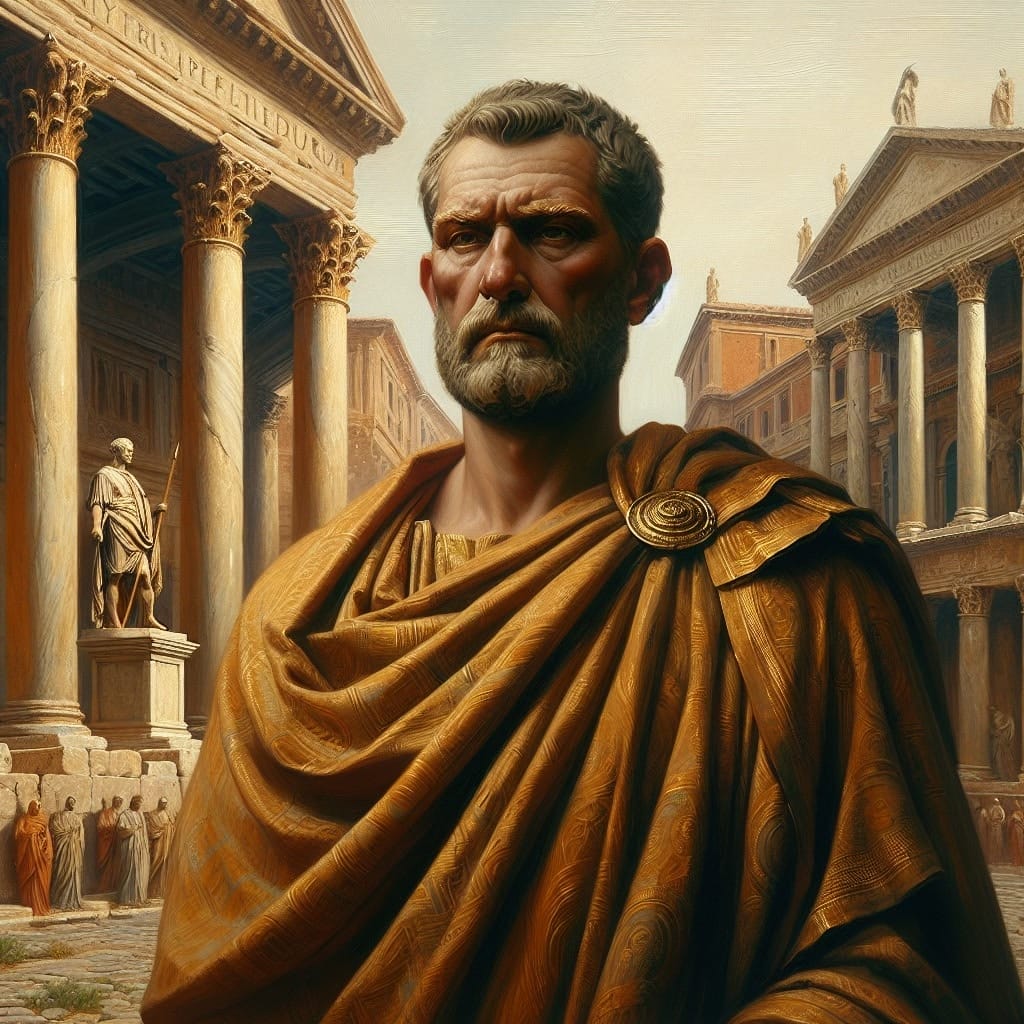
The praefectus annonae was the key official entrusted with overseeing the grain supply. His duties extended from managing transportation contracts to curbing market fraud and speculation, ensuring fair prices and availability. By supporting private businessmen with legal assistance, the praefectus annonae facilitated a balanced approach to public grain distribution, feeding a significant portion of the populace through the frumentationes.
Such state intervention was not limited to grain; it extended to other trade aspects, including taxation and the regulation of shipowners. By compelling the navicularii into collegia, the government could effectively supervise trade activities, illustrating a strategic blend of control and economic incentive that defined Roman trade practices.
Grain Regulation and Food Security
Grain was a cornerstone of the Roman diet, essential to the urban populace of Ancient Rome. The state’s involvement in the distribution of grain, particularly through the Grain Dole, was crucial in maintaining food security and political stability. Initiated by Gaius Gracchus in 123 BCE, this system aimed to quell social unrest by providing grain at reduced or no cost to citizens.
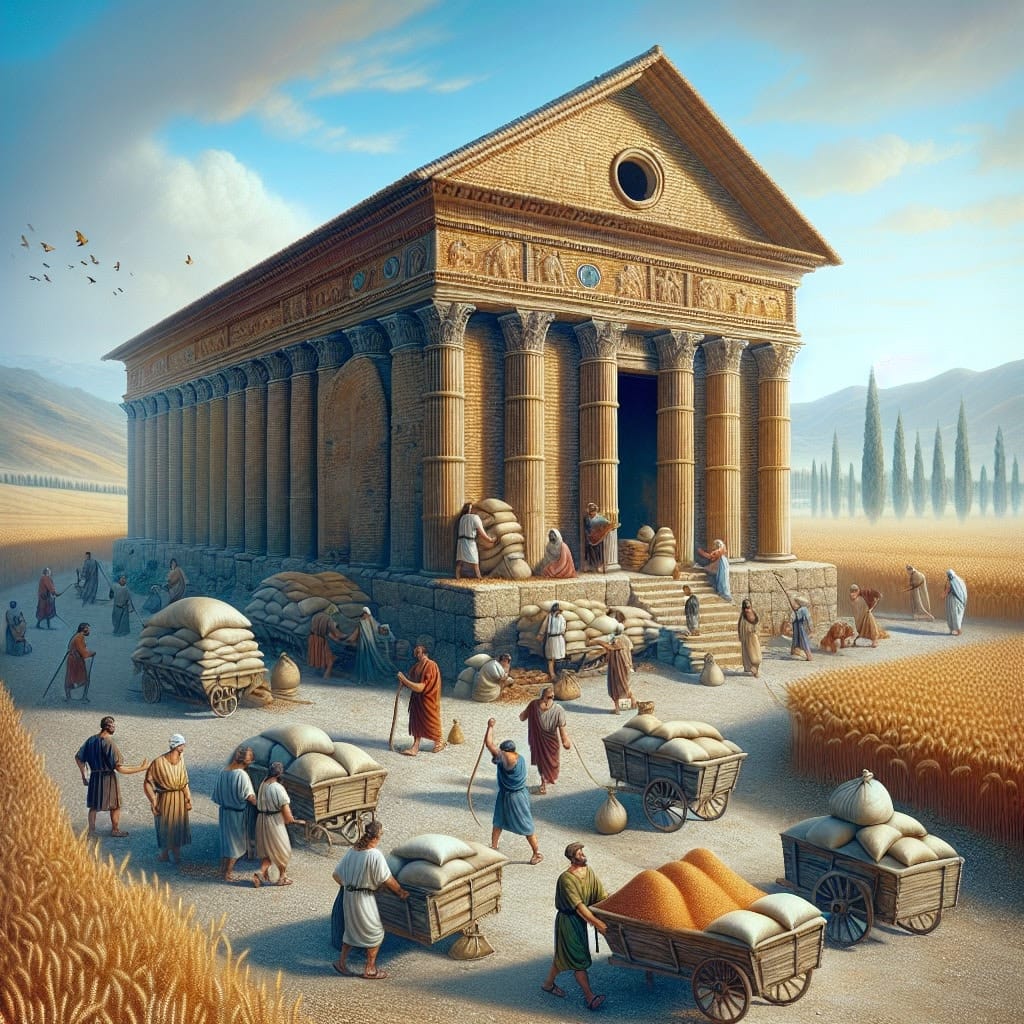
Several strategies were employed by the Roman government to secure a consistent grain supply. A significant portion of grain was collected as taxes-in-kind from provinces like Sicily and Egypt, ensuring a steady influx to the capital. The government also relied on private shippers and traders for logistics, operating under contracts that provided oversight yet allowed for market participation.
“The Grain Dole became essential for maintaining social order and political stability…”
Moreover, regulations were imposed on urban markets to stabilize prices, while private operations were supervised to counteract the challenges of poor market integration. These measures underscored the complex interplay between state control and free-market practices, pivotal to Rome’s trade dynamics and its lasting legacy.
Private Merchants and Free Market
In the Roman world, private merchants were instrumental in fostering long-distance trade, navigating both opportunity and risk in their pursuit of wealth. Despite societal views that regarded commerce as less prestigious than land ownership, these merchants capitalized on the burgeoning economic landscape. They engaged in trade across provinces, extending their reach to regions like Arabia, India, and China, facilitated by routes such as the Silk Road and maritime pathways across the Indian Ocean.
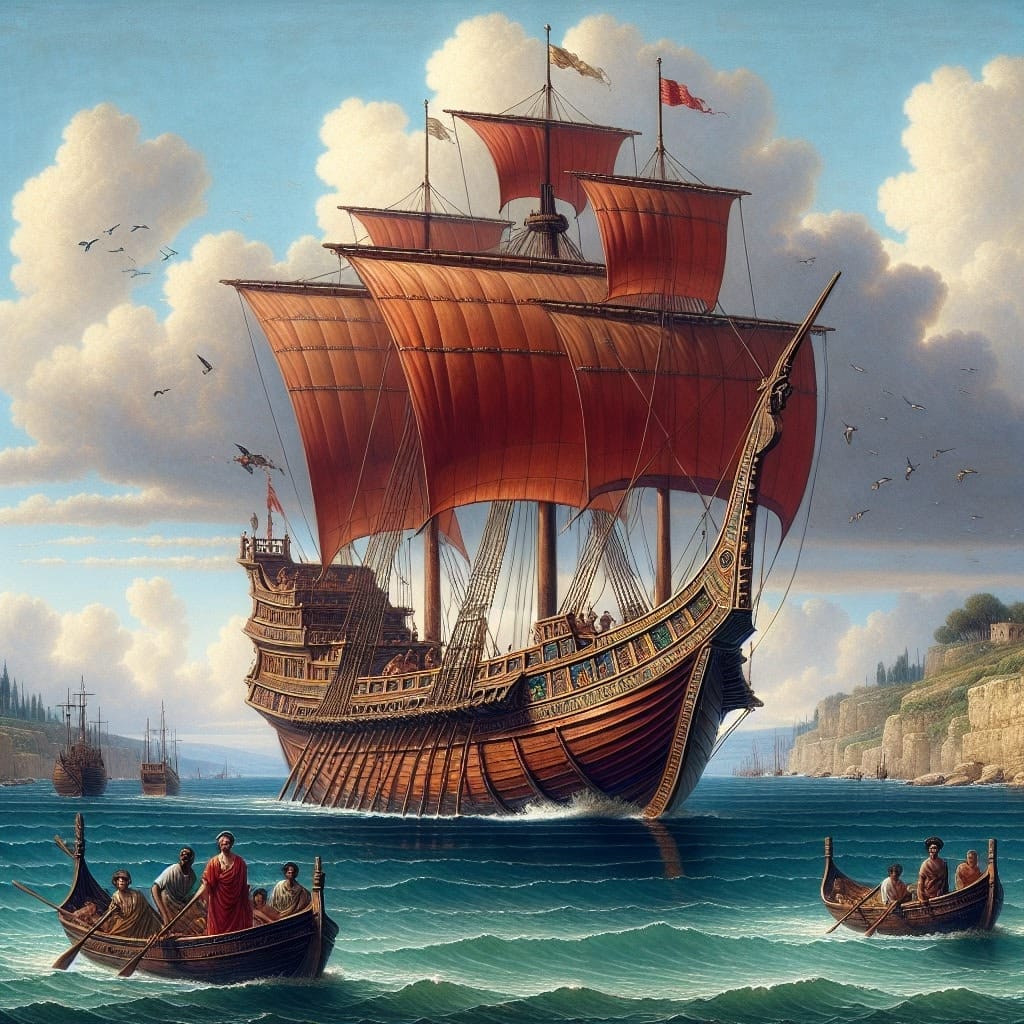
Merchants enjoyed a degree of economic freedom that allowed them to thrive independently of state control. This autonomy was not without its challenges, as they faced risks such as piracy and fluctuating market demands. Yet, the development of banking systems provided a vital lifeline, enabling merchants to secure loans in one port and repay in another, thus enhancing liquidity and trade fluidity.
Successful merchant families often emerged from these ventures, leveraging regional specialties like Egyptian wine and Spanish olive oil to amass wealth. Such families, employing slaves and freedmen as agents, adeptly managed their business affairs. This approach not only bolstered their financial status but also contributed significantly to the economic prosperity of the provinces, illustrating the powerful role of merchants in the Roman trade dynamic.
Economic Impact of Trade Practices
The Roman trade system, a blend of state control and free-market practices, significantly impacted both individual wealth and regional economies. Merchants, benefiting from diverse trade goods such as cereals, olive oil, and luxury items, amassed substantial wealth. The sheer volume of trade, with Rome trading millions of kilograms of oil and wine annually, provided expansive economic opportunities.
Locally, the economic conditions across various regions were profoundly influenced by trade. Regional specialties like Egyptian wine and Spanish olive oil not only enhanced inter-regional trade but also stimulated local economies by creating demand for agricultural surpluses. This, in turn, prompted population growth and urbanization, reflecting the dynamic economic growth from the 2nd century BCE to the 2nd century CE.
| Aspect | State-Controlled Goods | Free-Market Goods |
|---|---|---|
| Examples | Grain, essential foodstuffs | Wine, olive oil, luxury items |
| Regulation | Heavily regulated | Market-driven |
| Economic Impact | Stability, food security | Wealth creation, diverse markets |
Thus, the Roman approach to trade not only created wealth but also fostered economic vitality across its provinces, illustrating a complex interplay between regulated and free-market forces.
Trade of Luxury Goods
In Ancient Rome, luxury goods played a pivotal role in shaping the social fabric and economic landscape. The bustling Portus harbor was a gateway through which opulent items reached the elite, including exotic spices, silks from Asia, colored marble for grand architecture, and precious metals. These items not only catered to the desires of Rome’s affluent citizens but also symbolized their wealth and elevated status.
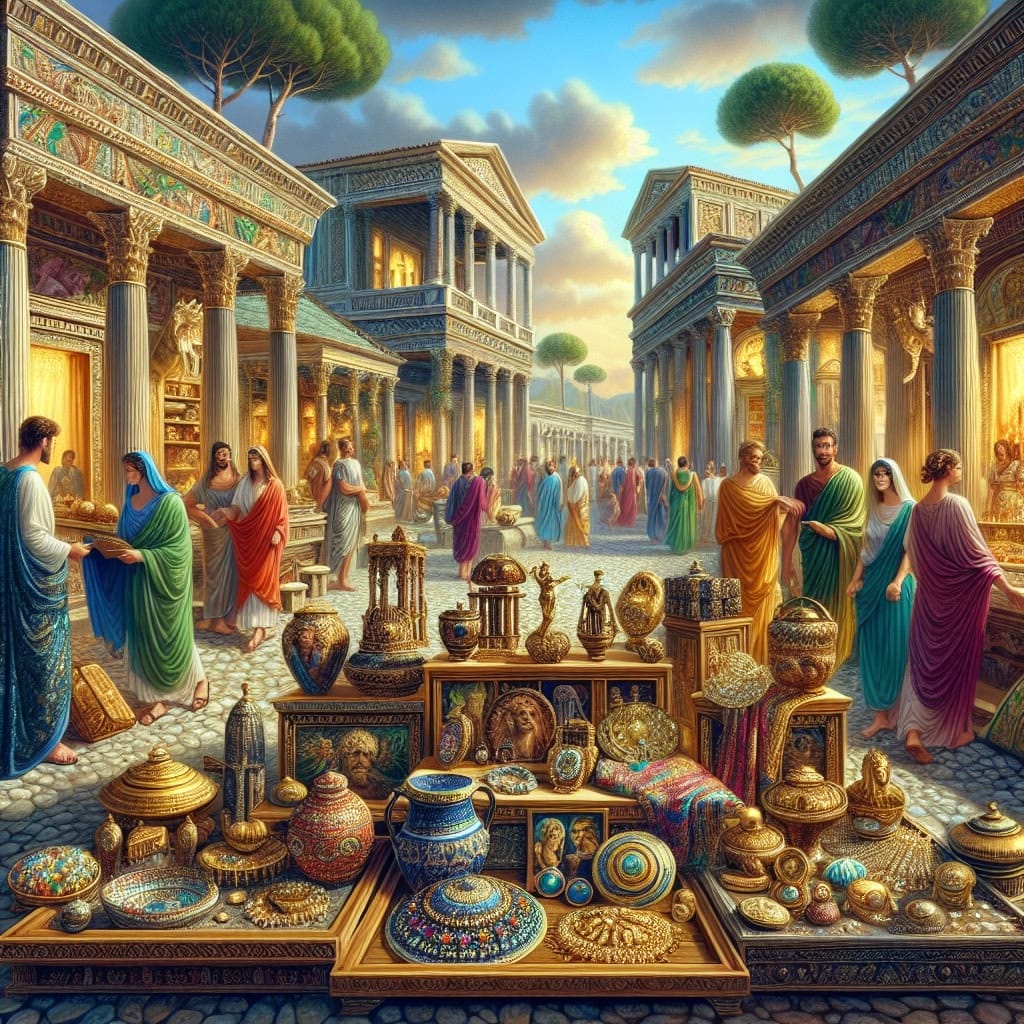
The trade of luxury goods thrived under a mix of state oversight and free-market principles. Despite societal norms that favored land ownership, many wealthy Romans engaged in commerce by leveraging agents and slaves to manage trading activities. This participation fueled a vibrant market for luxuries, reflecting the growing sophistication and interconnectedness of the Roman economy.
Socially, the quest for luxury goods underscored the Roman elite’s pursuit of distinction and comfort, fostering a culture where status was often displayed through material possessions. As trade networks expanded, the influence of luxury goods permeated Roman society, impacting not only the economy but also the cultural and social dynamics of the empire.
Everyday Goods and the Market
The Roman marketplace was a vibrant hub, teeming with goods that catered to both basic needs and opulent desires. While luxury items like silks and spices were imported through major ports such as Portus, everyday goods were equally essential, forming the backbone of daily life in Rome.
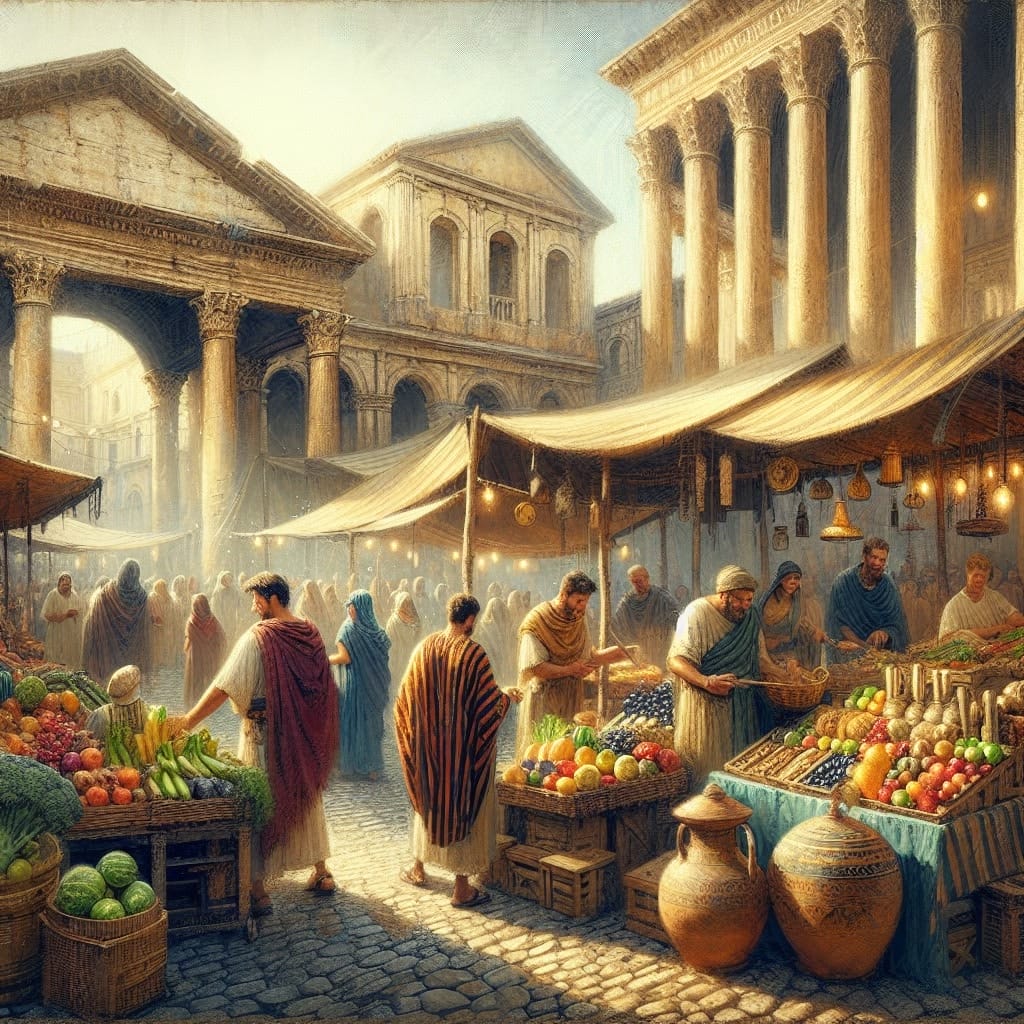
Everyday commodities, including grains, oil, and pottery, were widely accessible, ensuring the population’s sustenance. These items, often produced locally or transported from nearby regions, were available in abundance at markets, making them integral to the Roman diet and daily existence. In contrast to the elaborate trade networks required for luxury goods, which spanned continents and involved complex logistics, the trade of everyday items was more straightforward, driven by local demand and production.
“The Roman market was not just a place of commerce but a lifeline that connected citizens to the essentials of life.”
This accessibility of everyday goods had a profound impact on Roman society, allowing citizens from various economic backgrounds to participate in market life. The simplicity of acquiring these necessities contrasted sharply with the exclusive nature of luxury goods, underscoring the dual nature of Roman trade and its influence on both social structure and economic stability.
Legal Framework of Roman Trade
The Roman Empire’s thriving trade network was underpinned by a comprehensive legal framework that governed its commercial activities. Key trade laws were established to ensure fair transactions and protect property rights, essential for maintaining order in the bustling markets. The Lex Mercatoria, or merchant law, was one such set of rules, providing guidelines for contracts and partnerships.
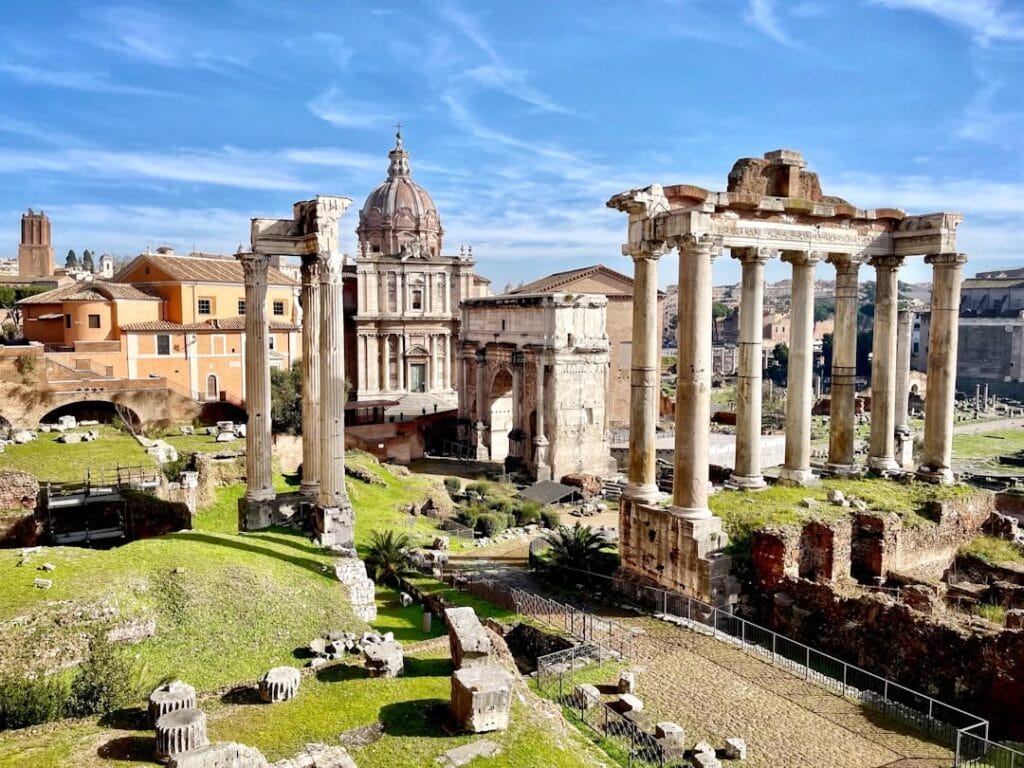
Legal institutions played a pivotal role in enforcing these trade laws. Roman courts were responsible for adjudicating disputes, thus providing a reliable and predictable environment for merchants. This legal oversight was crucial in fostering trust and promoting economic stability, as it assured traders that their rights would be upheld.
At the same time, the state exercised control through taxation and market regulation, balancing its interests with the principles of a free-market system. By regulating key goods and trade routes, the state maintained its grip over the economy, ensuring that commerce flourished while aligning with broader social and political objectives.
Infrastructure Supporting Trade
The success of Roman trade was significantly bolstered by its extensive infrastructure, which included a vast network of roads, ports, and trade routes. Roman roads were marvels of engineering, connecting the empire’s farthest corners and facilitating the swift movement of goods and people. These well-constructed roads enabled merchants to transport commodities efficiently across vast distances, thus enhancing trade dynamics.
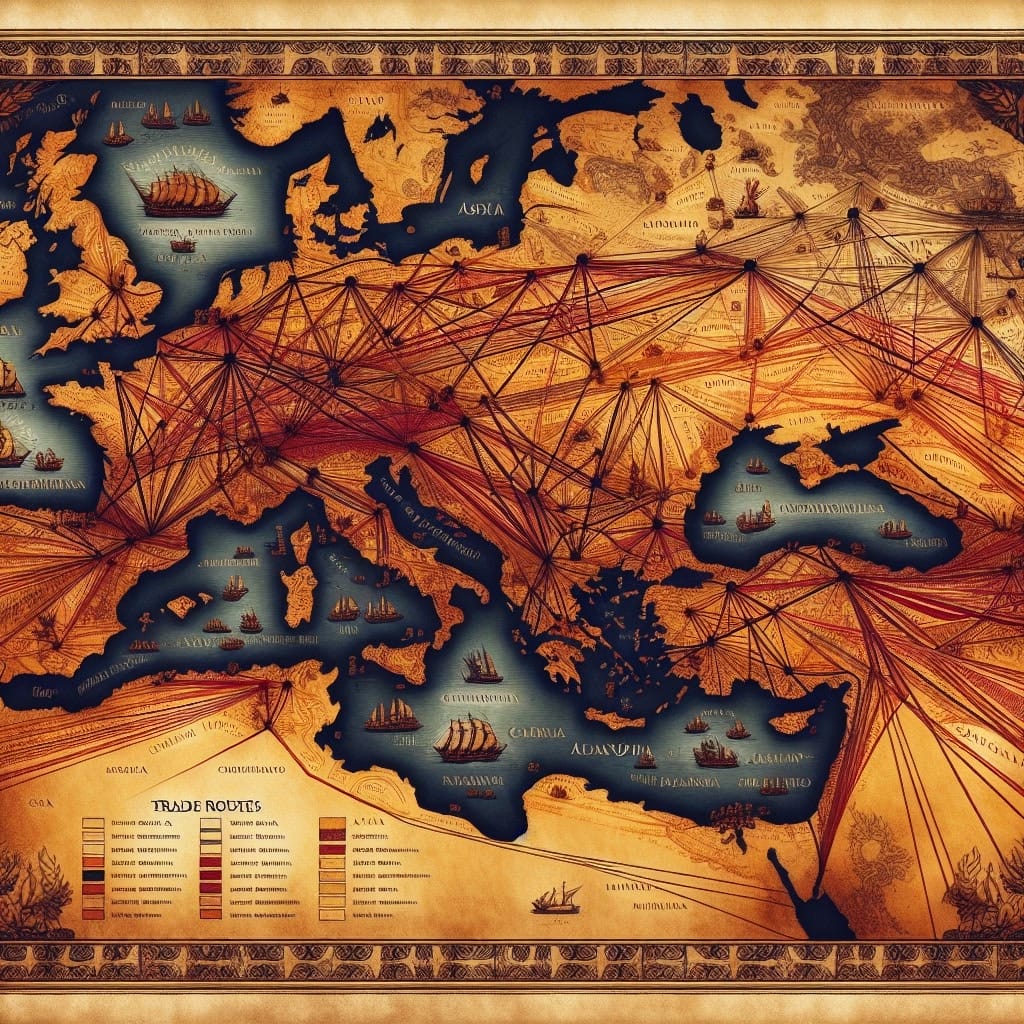
Among the most critical trade hubs was Portus, an artificial harbor that played a central role in importing both essential and luxury goods. The strategic location of ports like Portus and others, such as Alexandria and Antioch, supported the vibrant flow of goods, including exotic items from remote regions.
Technological advancements further propelled Roman trade. Innovations in shipbuilding and navigational techniques allowed for safer and more efficient maritime journeys. The development of banking systems, which facilitated financial transactions across different ports, also underscored the sophisticated nature of Roman commerce. Together, these elements created a robust infrastructure that was essential in sustaining the multifaceted trade practices of Ancient Rome.
Cultural Exchange Through Trade
The bustling trade networks of Ancient Rome were not merely conduits for goods but also powerful vehicles for cultural exchange. As merchants traversed the Roman Empire’s roads and seas, they carried with them not only spices and silks but also ideas, beliefs, and art forms from distant lands. This interchange enriched Roman society, creating a tapestry of diverse influences that were woven into its cultural fabric.
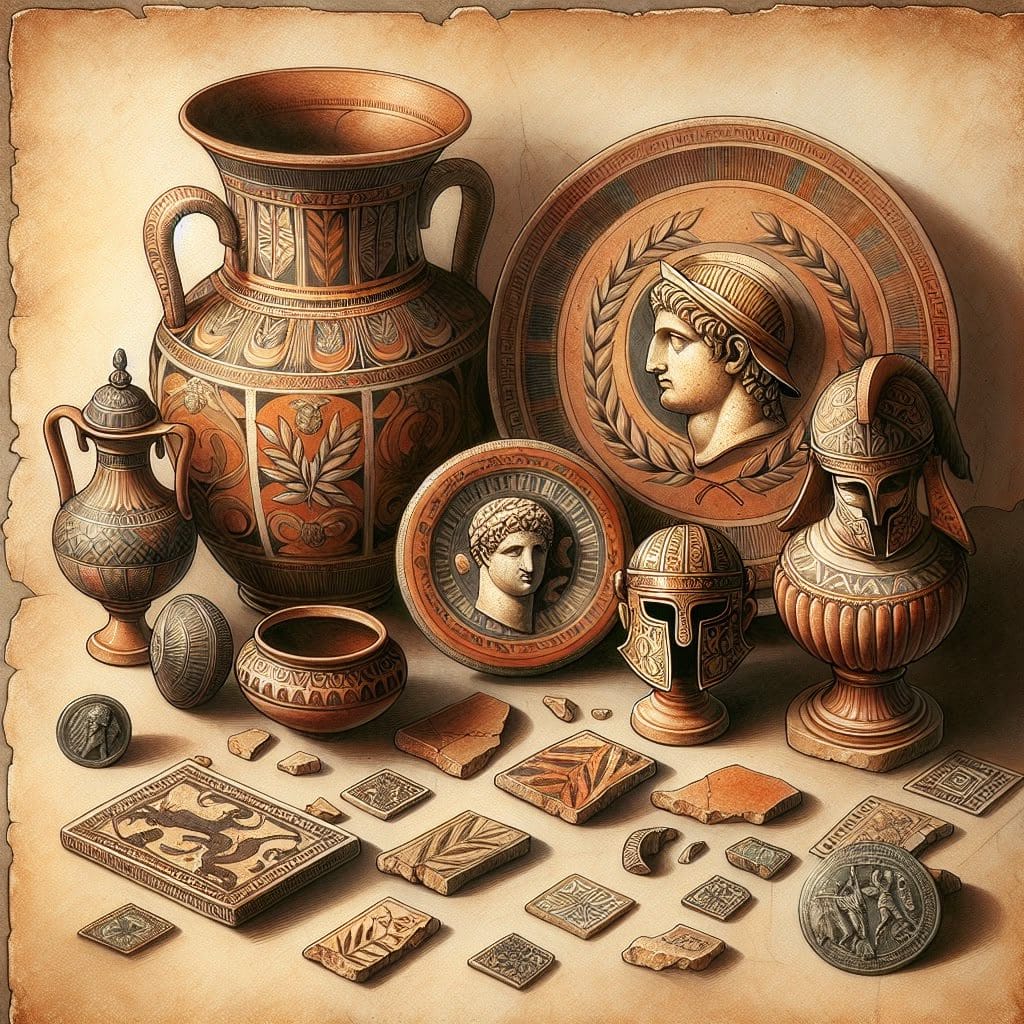
Ports like Portus played a crucial role in this exchange, acting as gateways through which Eastern philosophies, architectural styles, and artistic motifs entered the empire. For instance, the importation of Greek art and literature significantly impacted Roman aesthetics and intellectual pursuits, leading to a fusion of styles that became distinctly Roman.
The infusion of foreign cultures also influenced Roman religion and cuisine, with the introduction of new deities and culinary ingredients. This cultural amalgamation helped to forge a cosmopolitan society where diverse ideas and practices coexisted, shaping the social and cultural landscape of Rome. Thus, trade was instrumental not only in economic terms but also in cultivating a rich, multicultural Roman society.
Challenges in Roman Trade
The Roman trade system faced numerous challenges, both internal and external, that impacted its efficiency and stability. Piracy was a significant external threat, particularly in the Mediterranean Sea, where pirate fleets disrupted trade routes and plundered merchant ships. This not only endangered lives but also escalated the cost of securing goods, thereby affecting the prices of essential and luxury items.
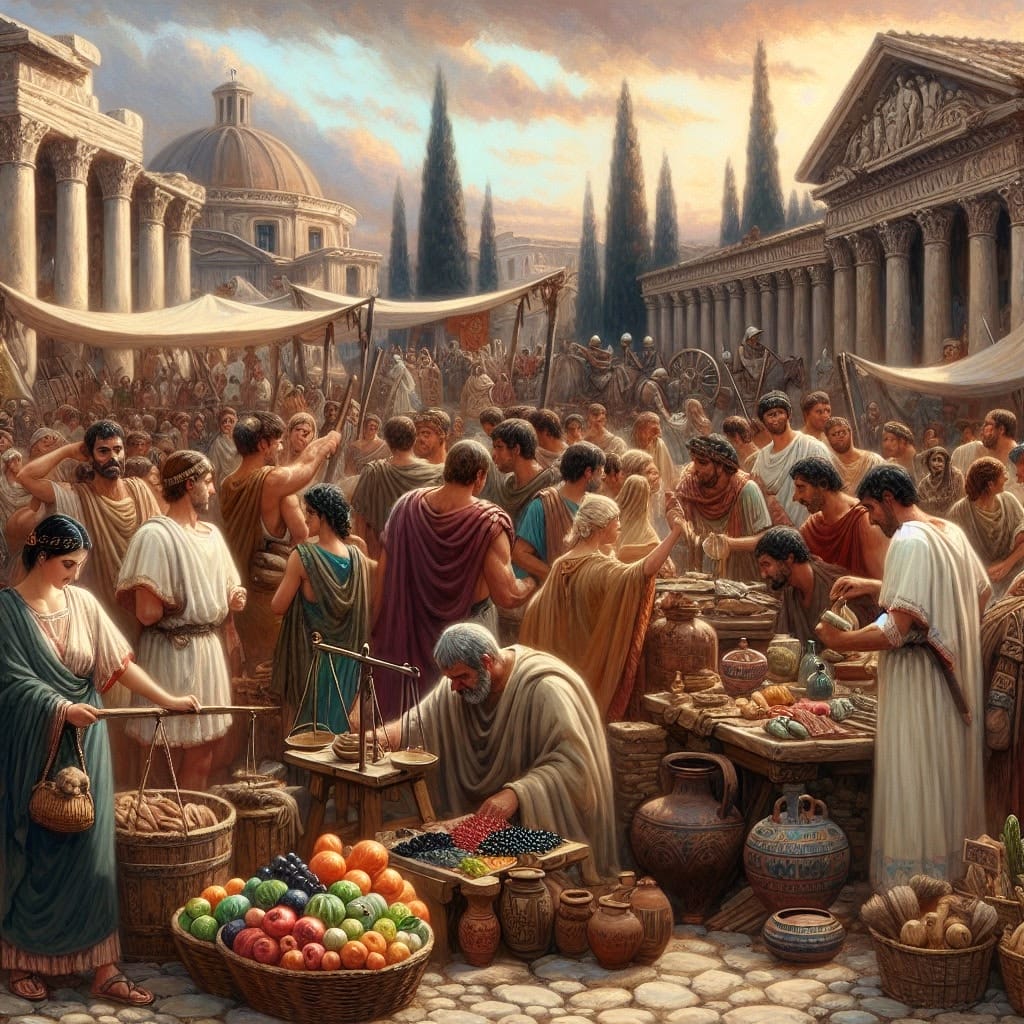
Moreover, political instability within the empire posed serious internal threats to trade. Power struggles, civil unrest, and changes in leadership often led to inconsistent trade policies and disrupted market operations. Such instability hindered economic growth and created uncertainty among merchants and traders.
| Common Trade Challenges |
|---|
| Piracy |
| Political Instability |
| Fluctuating Market Policies |
| Economic Inflation |
These challenges, compounded by economic issues such as inflation and resource scarcity, required strategic responses to maintain the delicate balance between state control and free-market practices in Roman trade. Addressing these challenges was crucial for sustaining Rome’s economic prosperity and ensuring the continued flow of goods across its vast territories.
Legacy of Roman Trade Practices
The trade practices of Ancient Rome have left an indelible mark on modern economic systems. The Romans’ adept combination of state control and free-market principles established a framework that continues to influence contemporary trade policies. By regulating key commodities while allowing a flourishing free market for luxury and everyday goods, Rome created a resilient economy adaptable to various demands.
“The Roman approach to blending state oversight with free-market dynamics remains a cornerstone of modern economic strategies.“
Lessons from Roman trade extend beyond economic structures to include the importance of infrastructure and legal frameworks. The extensive network of roads and ports, like the pivotal Portus harbor, facilitated efficient trade routes that modern supply chains emulate. Moreover, Roman legal institutions set precedents for trade regulation, ensuring fairness and efficiency in markets.
The Roman emphasis on both state and private enterprise offers valuable insights for balancing regulation and market freedom today. This dual approach not only supported economic growth but also fostered cultural exchange, a principle that continues to resonate in our interconnected global society.
Conclusion and Final Thoughts
In examining Roman trade practices, it becomes apparent that the empire masterfully balanced state control with free-market dynamics. Key goods such as grain were tightly regulated to ensure stability, while luxury items flowed freely through ports like Portus, showcasing wealth and cultural exchange.
This dual approach fostered an economy that was both resilient and diverse, accommodating the needs of its citizens while supporting economic growth. The integration of state oversight with market freedom created a thriving trade network that serviced both the empire’s elite and general populace.
Roman trade practices offer a profound lesson: the coexistence of regulation and free enterprise can lead to a prosperous and stable society, a concept that continues to resonate in modern economic discourse.
Frequently Asked Questions
What was the role of the Portus in Roman trade?
Portus served as a crucial harbor for importing essential and luxury goods into Rome. It facilitated the arrival of items such as grain, silk, and exotic spices, catering to the needs of both the empire and its wealthy citizens.
How did free-market principles influence Roman trade?
Despite state controls, Roman trade thrived on free-market principles. Wealthy individuals engaged in commerce through agents and slaves, promoting a robust market that included luxury items from distant regions.
Were luxury goods significant in Roman society?
Yes, luxury goods were a symbol of wealth and status in Roman society. They were sought after by affluent citizens and played a role in enhancing lifestyles and social standing.
What challenges did Roman trade face?
Roman trade was challenged by internal and external threats such as piracy and political instability. These factors sometimes disrupted trade routes and affected economic stability.

